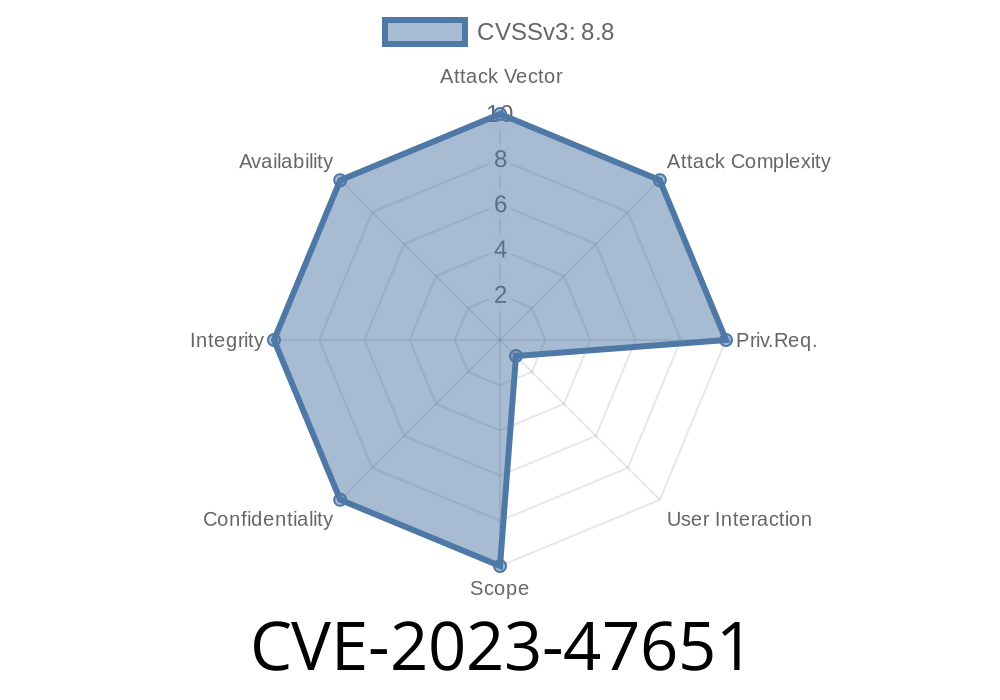Security researchers have discovered and reported a Cross-Site Request Forgery (CSRF) vulnerability within the popular WordPress plugin, Robert Macchi's WP Links Page. This plugin is widely used to create and manage links on your WordPress site, organizing them by categories and tags with an easy-to-use dashboard. The vulnerability specifically affects WP Links Page from versions "n/a" through 4.9.4. In this post, we will break down the issue, provide code snippets to understand the vulnerability, offer links to original references, and delve into the exploit details.
Vulnerability Overview
Cross-Site Request Forgery (CSRF) is a type of web security vulnerability that allows an attacker to perform unwanted actions on a user's behalf. In this case, the attacker can trick the user into submitting requests to the affected site without their knowledge, potentially leading to unauthorized actions or data leaks.
The CSRF vulnerability within the Robert Macchi WP Links Page plugin allows an attacker to send an email or message containing a specially crafted link. When clicked, this link may trigger unintended actions on the WordPress site by the user, creating a potential security issue.
Code Snippet
A typical scenario of a CSRF attack might begin with the attacker forging an HTTP request containing the victim's session credentials, as shown below:
POST /wp-links-page/submit-link HTTP/1.1
Host: example.com
Content-Type: application/x-www-form-urlencoded
Content-Length: N
csrf-token=ATTACKER_TOKEN&link_title=Example&link_url=https://attacker.com
In the above example, the attacker sends an HTTP request to the vulnerable site posing as the victim. The ATTACKER_TOKEN is placed in the request, and the victim's link, "Example," is substituted with a malicious link to https://attacker.com.
Original References
1. CVE Details: https://cve.mitre.org/cgi-bin/cvename.cgi?name=CVE-2023-47651
2. WP-Links Page Plugin: https://wordpress.org/plugins/wp-links-page/
3. WordPress Security Release: https://wordpress.org/news/2023/02/wordpress-4-9-5-security-and-maintenance-release/
4. OWASP CSRF Guide: https://cheatsheetseries.owasp.org/cheatsheets/Cross-Site_Request_Forgery_Prevention_Cheat_Sheet.html
Exploit Details
In order to exploit this vulnerability, an attacker needs to craft a malicious link and be able to convince the victim to click on it. The attacker could do this through phishing attacks, embedding their link in a seemingly legitimate website or email, or by exploiting other vulnerabilities on the victim's site.
Once the victim clicks the malicious link, their browser will send the crafted request to the vulnerable site with their session credentials. Here's how it could happen in practice:
The attacker sends the link to the victim via email, social media, or other communication methods.
4. The victim clicks the link, unintentionally executing the attacker's desired actions on the vulnerable site.
Mitigation Steps
In order to protect your WordPress site from such attacks, it is crucial to always keep your plugins and themes updated. In this case, users of the WP Links Page plugin should update to the latest version, which patches the CSRF vulnerability. Additionally, site administrators should employ proper security measures such as web application firewalls, strong password policies, and user education to prevent phishing attacks.
Conclusion
Understanding the CVE-2023-47651 CSRF vulnerability in the Robert Macchi WP Links Page plugin is crucial for ensuring the security of your WordPress site. By updating your plugins, implementing proper security measures, and educating users, you can help protect your site from potential attackers. Always stay vigilant and keep up to date with the latest security news to maintain a secure online presence.
Timeline
Published on: 11/18/2023 22:15:08 UTC
Last modified on: 11/27/2023 20:34:25 UTC
